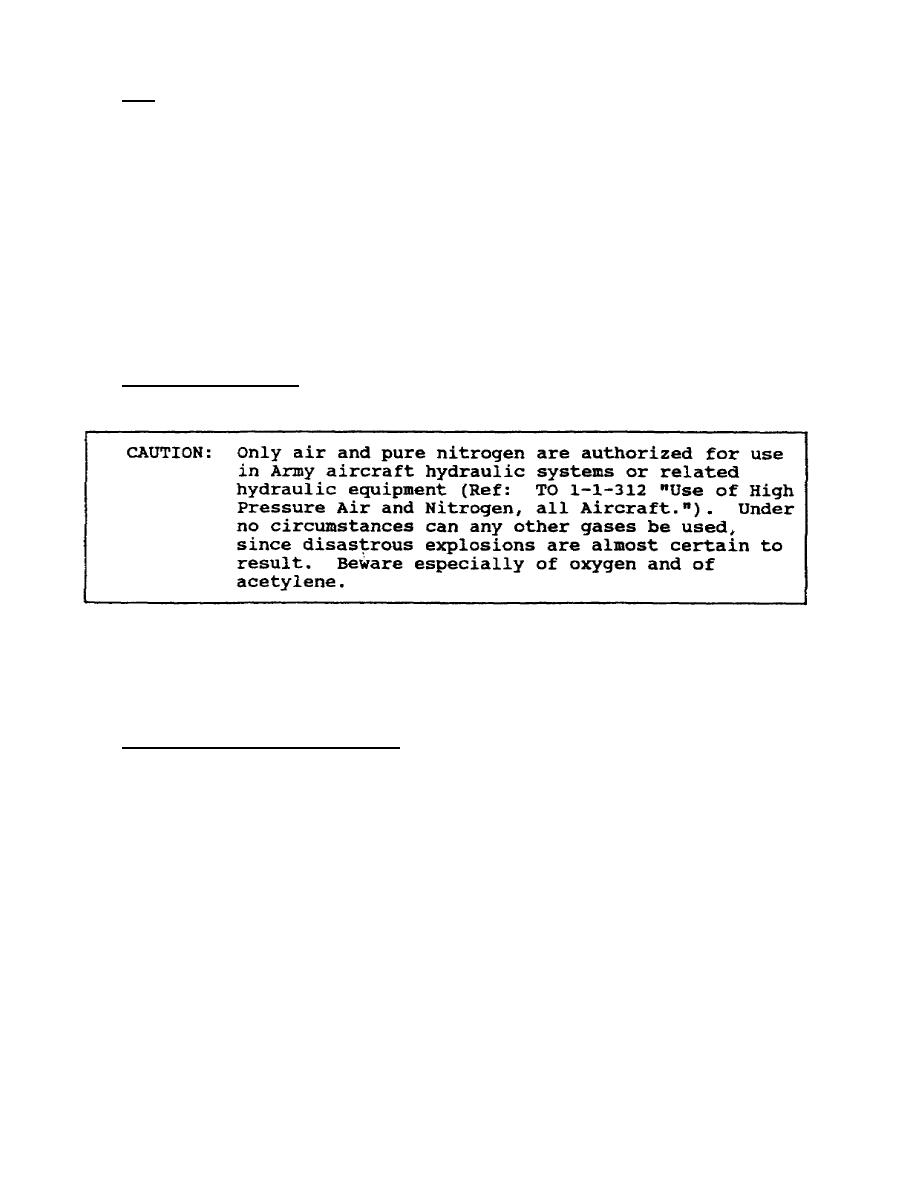
Air. When used in reference to hydraulics, air is understood to
mean atmospheric air.
Briefly, air is defined as a complex,
indefinite mixture of many gases. Of the individual gases that make
up atmospheric air, 90 percent or more is oxygen and nitrogen.
Some knowledge of the physical characteristics of air is quite
important to this instruction.
Because the physical properties of
all gases, including air, are the same, a study of these properties
is made with reference to gases in general.
It is important to
realize, however, though similar in physical characteristics, gases
differ greatly in their individual chemical composition.
This
difference makes some gases extremely dangerous when under pressure
or when they come in contact with certain substances.
Air and Nitrogen. Air and pure nitrogen are inert gases and are
safe and suitable for use in hydraulic systems.
Most frequently the air used in hydraulic systems is drawn out of the
atmosphere and forced into the hydraulic system by means of an air
Pure nitrogen, however, is available only as a
compressed bottle gas.
Application in Hydraulics.
The ability of a gas to act in the
manner of a spring is important in hydraulics.
This characteristic
is used in some hydraulic systems to enable these systems to absorb,
store, and release fluid energy as required. These abilities within
a system are often provided by means of a single component designed
to produce a springlike action.
In most cases, such components use
air, even though a spring might be equally suitable from a
performance standpoint.
Air is superior to a spring because of its
low weight and because it is not subject to failure from metal
fatigue as is a spring.
The most common use of air in hydraulic
systems is found in accumulators and shock struts.
13
AL0907



 Previous Page
Previous Page
